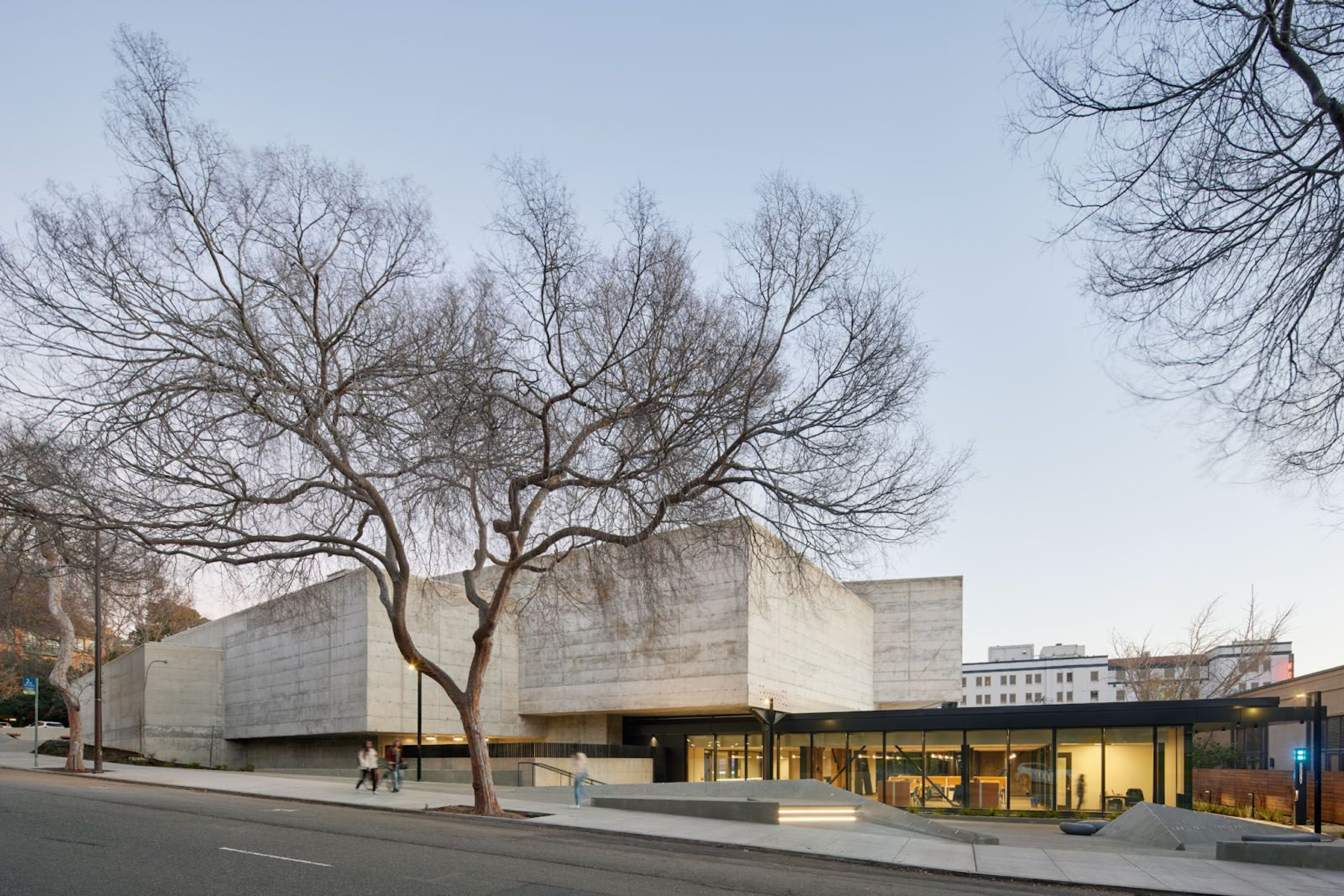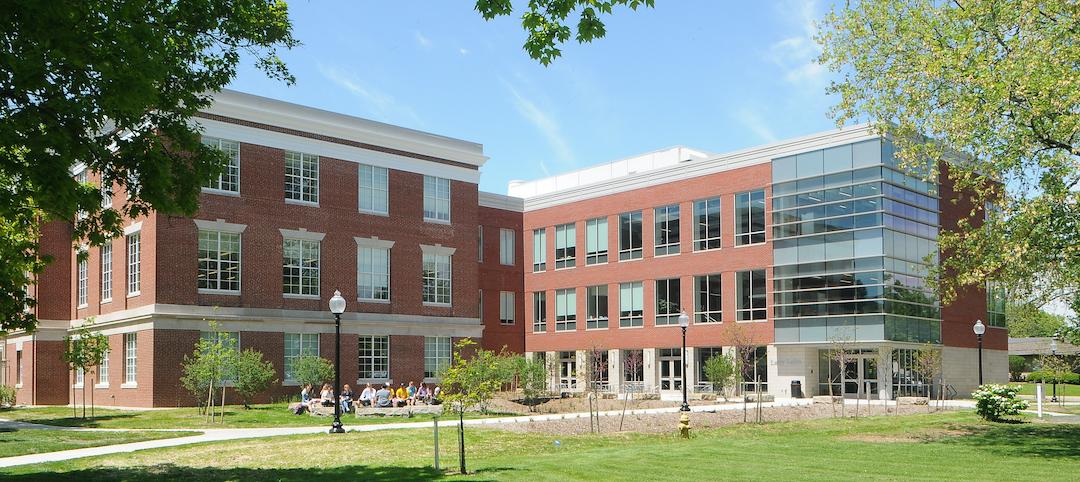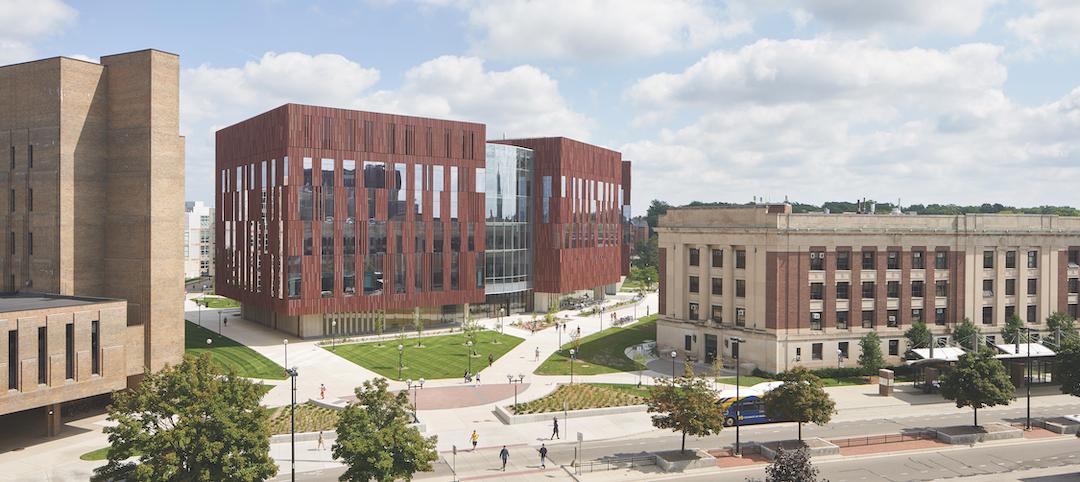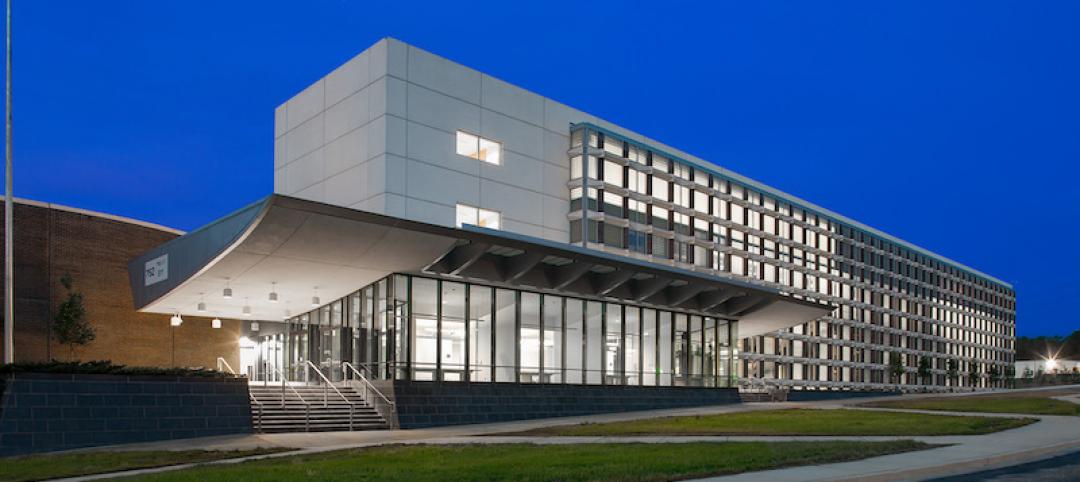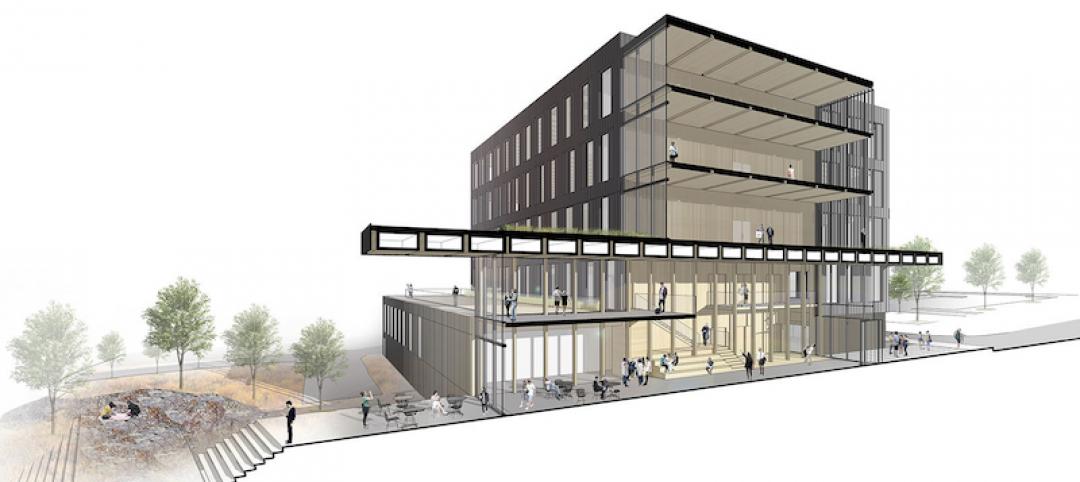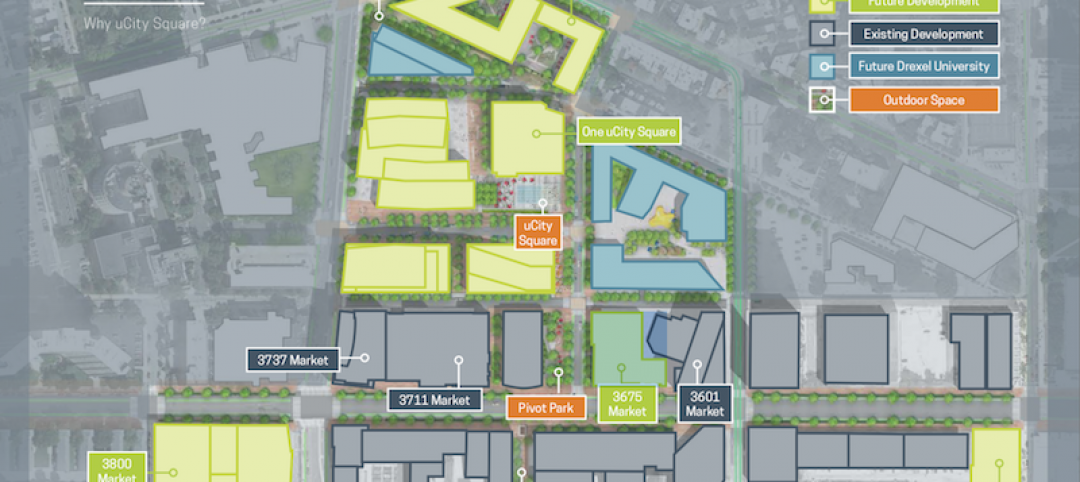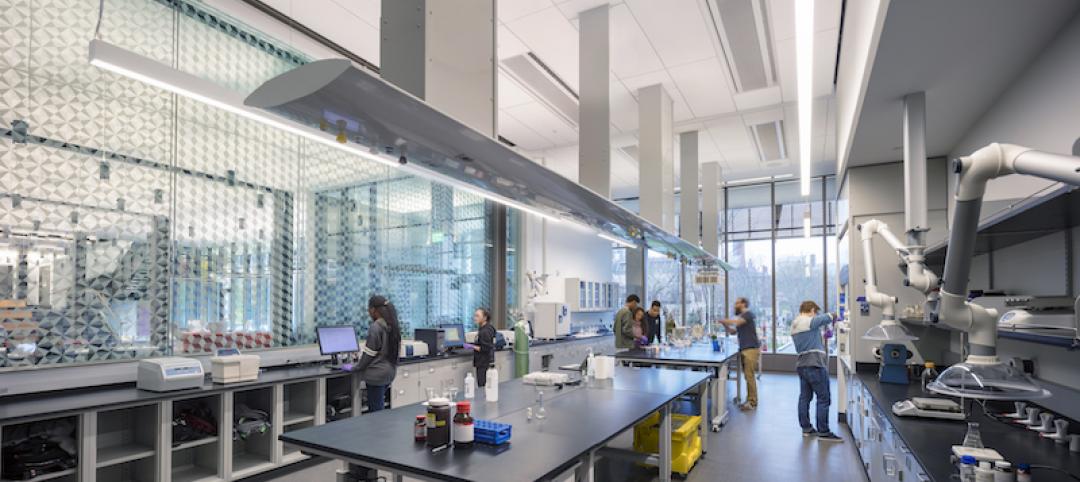After extensive renovation and an addition, the former Berkeley Art Museum and Pacific Film Archive at the University of California, Berkeley campus reopened in May 2022 as a modern life science lab building. The brutalist-style, historically significant structure, designed by Mario Ciampi, had been vacated in 2014 after being deemed seismically unsafe. MBH Architects, first brought on for a feasibility study, designed the renovations needed to make the building well-suited for life science laboratories while preserving the structure’s historical significance.
The design for the Bakar BioEnginuity Hub includes a glass-fronted addition and two new public plazas, as well as well-equipped research space, which is often cost-prohibitive for the young companies the facility will accommodate. MBH identified four major challenges to renovating the structure to satisfy the life science requirements:
- Upgrading structural performance to the current code
- Designing a life science and coworking program to fit within the building’s irregular geometry
- Addressing life safety and substantial mechanical modernization
- Performing renovations and upgrades while preserving the building’s historical character
Seismic performance, water intrusion, and acoustic performance, were addressed while bringing the building up to code. Mechanical, electrical, and plumbing infrastructure was overhauled, including the replacement of existing gas service with all-electric systems. This allowed the project to achieve low EUI, operational carbon neutrality, and Net-Zero HVAC water-use, as well as to meet LEED Gold requirements. Because the building is nearly all concrete, including floors, walls, and ceilings, the team was challenged to make all upgrades, including new modern lighting while minimizing the amount of cutting of the original structure.
Programmatic elements include a laboratory, open office areas, collaboration spaces, private offices, conference rooms, an auditorium, an undergraduate program area, terraces, and public outdoor spaces. The former museum’s upper-level galleries became glass-fronted labs that overlook dramatic cantilevered ramps hanging within a sky-lit double height space. These ramps and other parts of the museum’s circulation system that once led visitors from gallery to gallery have been preserved to foster interaction between groups of people who might not otherwise have an occasion to converse. This attribute furthers the university’s goal of encouraging innovation among scientists.
To spiff up what could otherwise be sterile-looking lab spaces, the design team infused the labs with liveliness by making walls brightly colored and importing natural light by uncovering and replacing skylights that had been covered to protect artwork from ultraviolet light damage. Workspaces and common area materials provide forms that contrast and complement the original structure and provide a welcoming environment.
On the Building Team:
Architect/Designer: MBH Architects
Structural Engineer: Forell | Elsesser
MEP: PAE
Historical Consultant: Page and Turnbull
Acoustics Consultant: Salter Associates
Lab Consultant: ZGF Architects
Civil Engineer: Luk & Associates
Landscape Architects: Jett Landscape Architecture + Design
General Contractor: Plant Construction
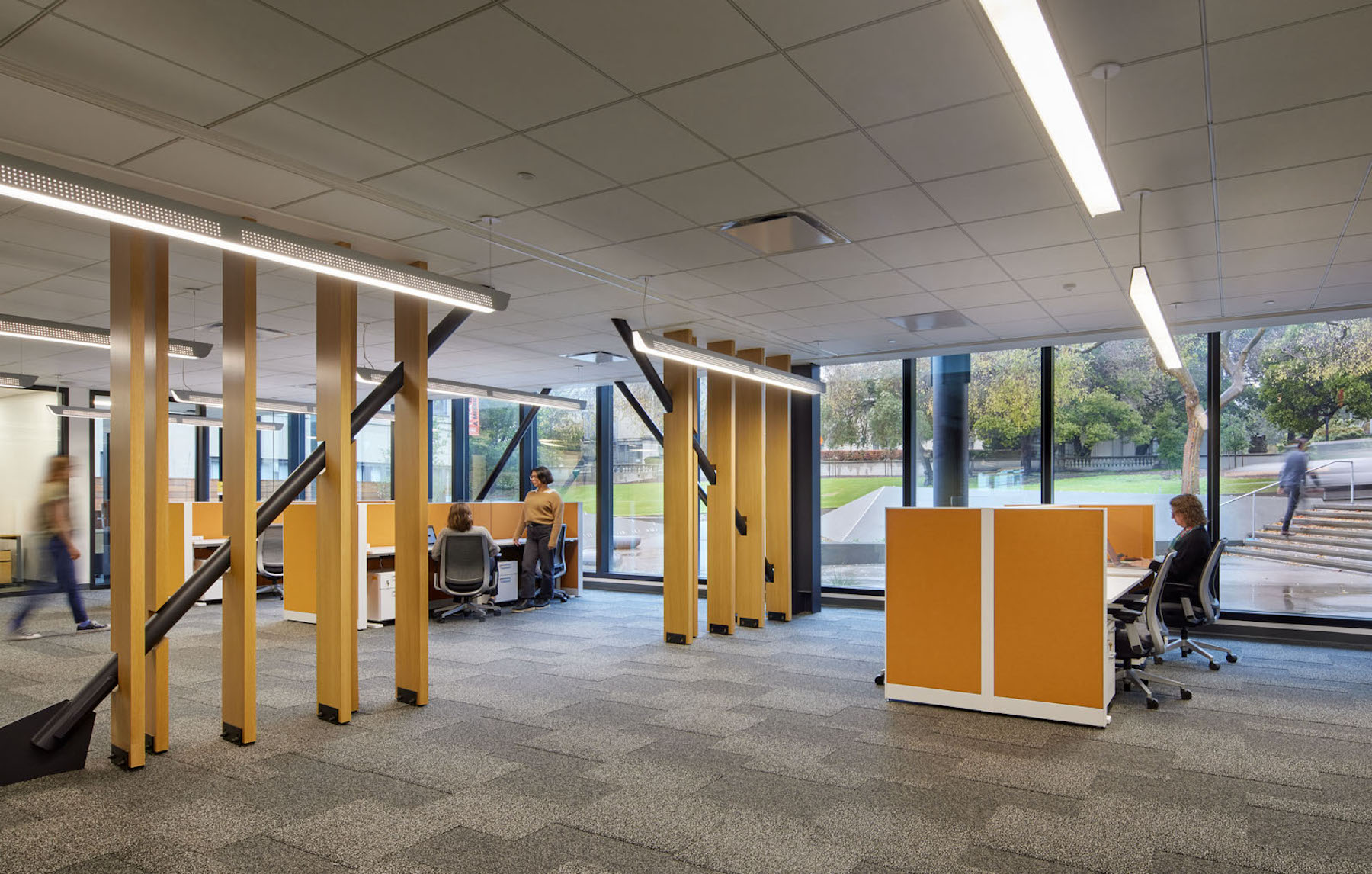
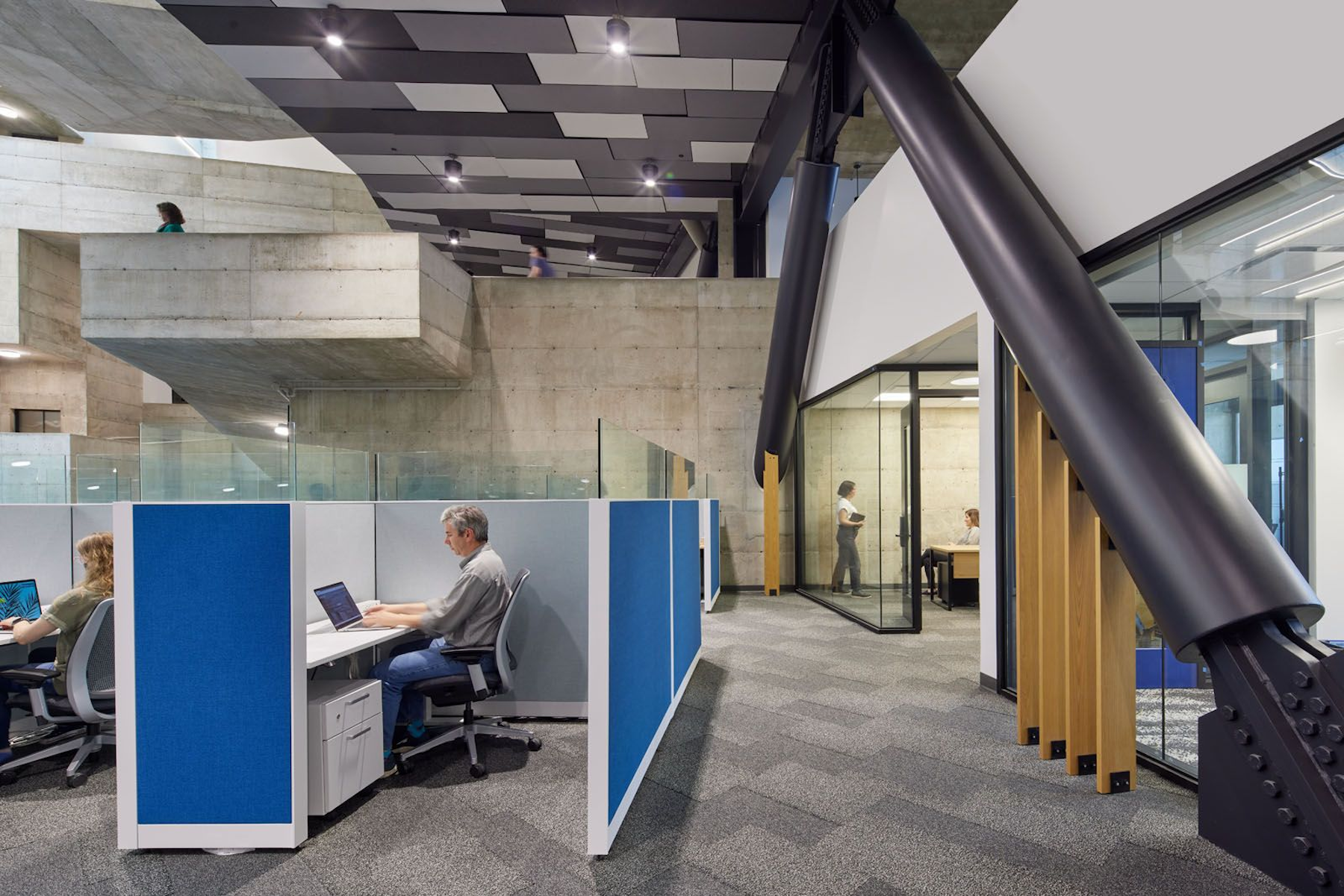
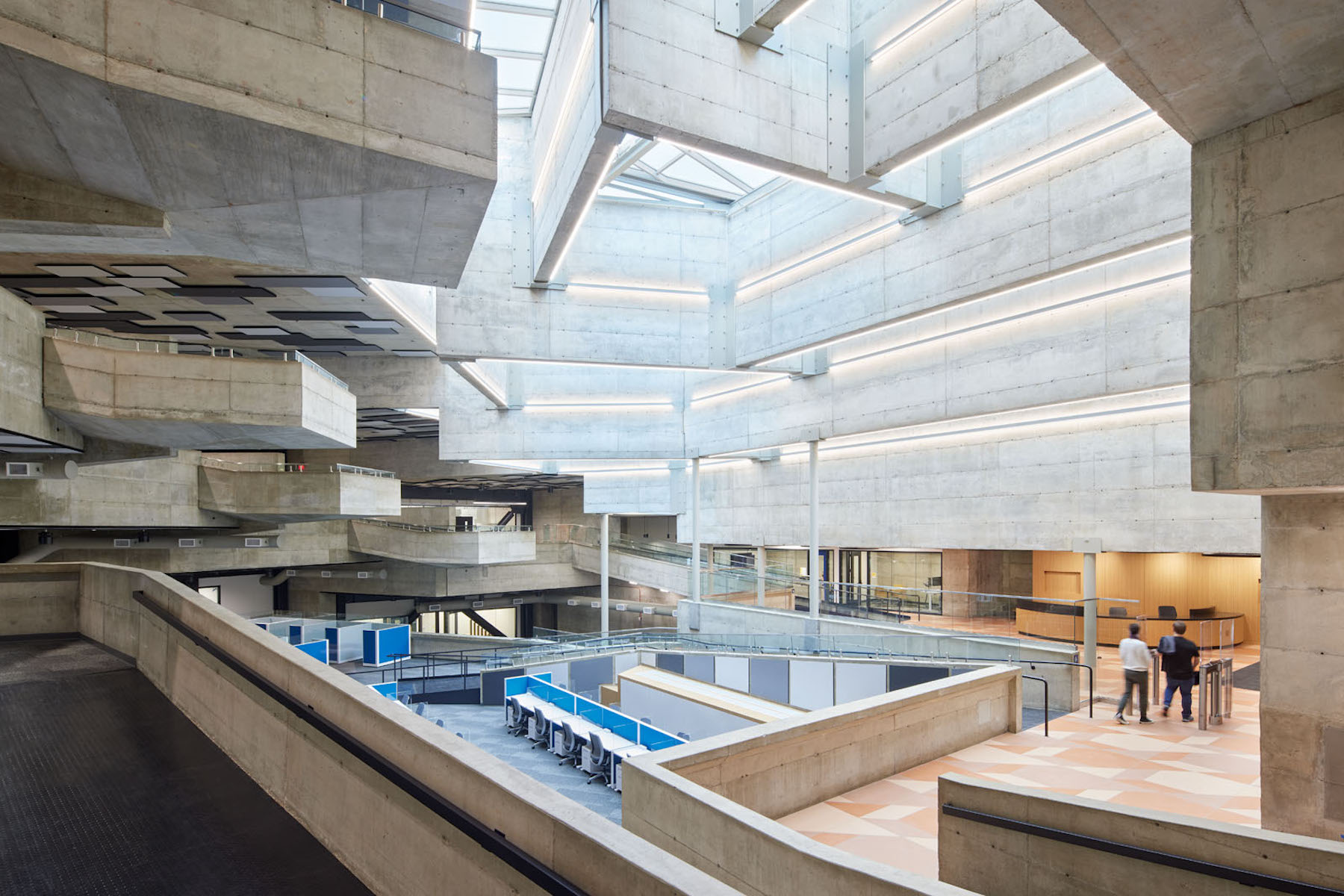
Related Stories
Laboratories | Jun 24, 2020
CDC set to build the most advanced high containment laboratory in the country
Flad Architects, Page Southerland Page, and WSP will plan, program, and design the HCCL.
University Buildings | Jun 3, 2020
Renovation can turn older university buildings into high-performing labs
David Miller of BSALifeStructures offers technical advice on renovation of college and university laboratories and scientific research facilities.
Giants 400 | Aug 13, 2019
2019 Science + Technology Giants Report: Operational flexibility is a must for S+T buildings
The science and technology (S+T) sector is arguably the industry’s most complex because it caters to a diverse clientele with specific priorities and imperatives, according to Building Design+Construction's 2019 Giants 300 Report.
Laboratories | May 21, 2019
Georgia Tech Research Institute adds 350,000 sf of specialized tech facilities
McCarthy Building Companies with Flad Architects acted as the design-build team.
Laboratories | Apr 23, 2019
Translational health science environments: 6 strategies for open innovation and knowledge transfer
Simply putting researchers and clinicians in the same building with hopes that serendipitous collaborations will ensue will often not yield the outcomes organizations seek.
Sustainable Design and Construction | Apr 9, 2019
One of the largest zero-carbon, net-zero buildings is rising in Spokane
Catalyst will be part of an innovation hub, with Eastern Washington University as its main tenant.
Laboratories | Apr 1, 2019
The Karolinska Institute’s new laboratory building
C.F. Møller Architects designed the building.
| Mar 21, 2019
Preserving Edison's "Corporate" R&D Lab in West Orange, N.J.
Report on Thomas Edison's West Orange, N.J., Laboratory.
Mixed-Use | Oct 25, 2018
Philadelphia’s uCity Square kicks off major expansion drive
This innovation center has several office, lab, and residential buildings in the works.
University Buildings | Jul 5, 2018
Brown University’s Engineering Research Center increases the university’s School of Engineering lab space by 30%
KieranTimberlake designed the facility and Shawmut Design and Construction was the general contractor.


